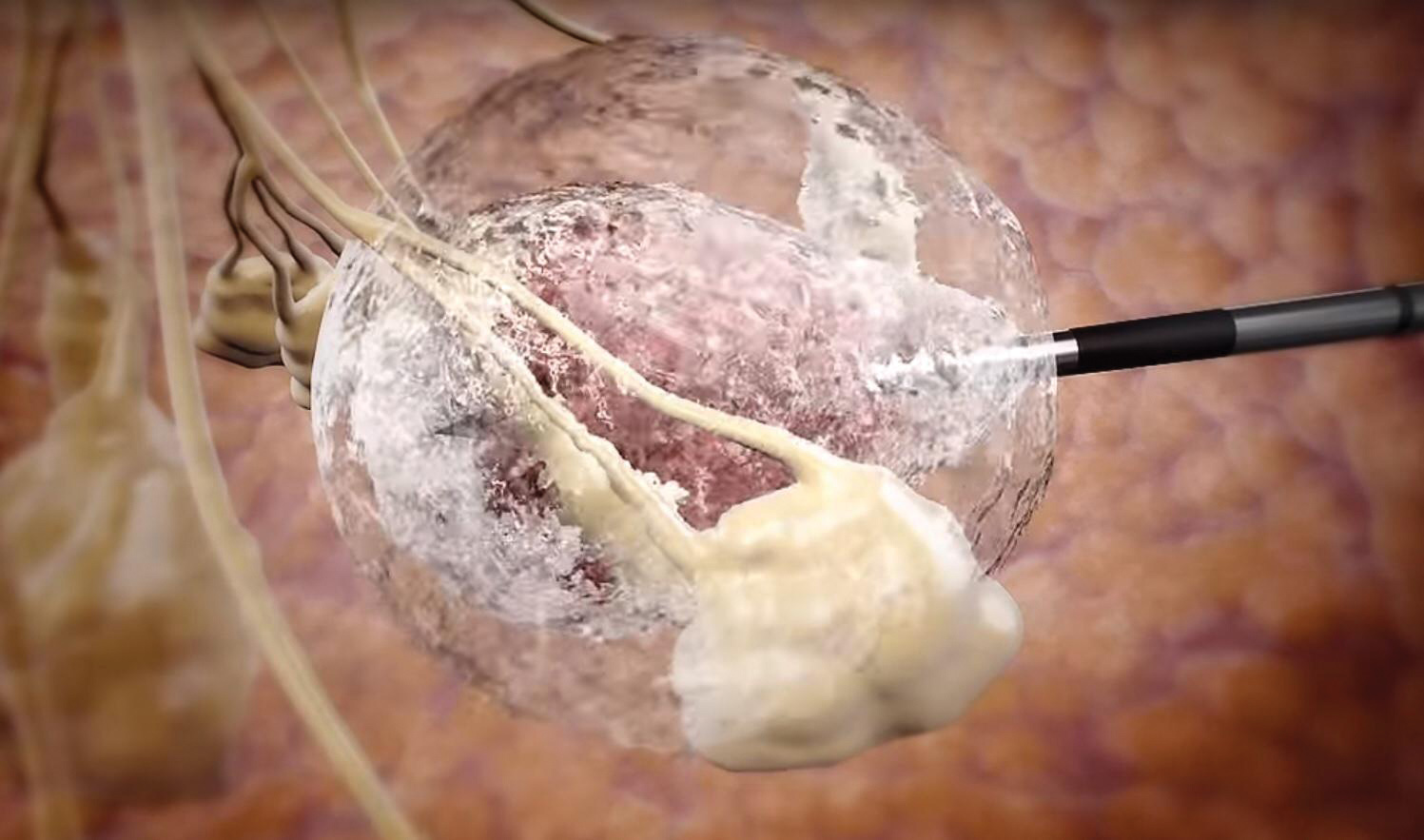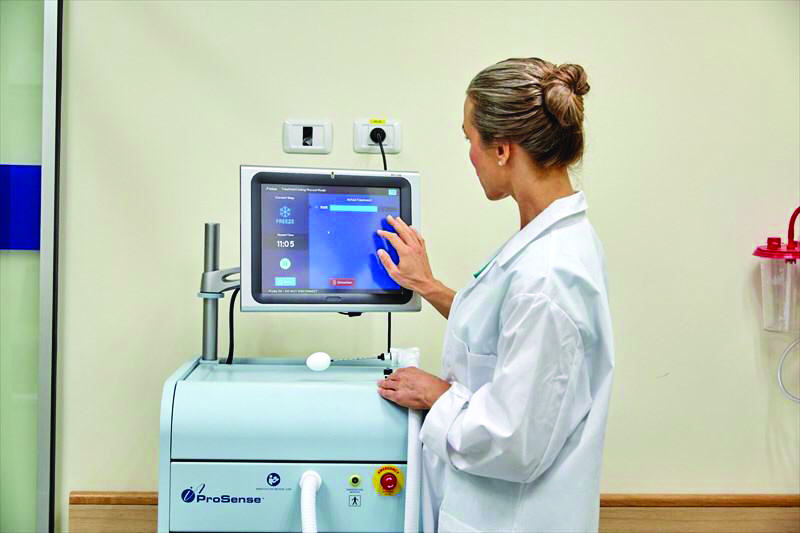Welcome News for Cancer Patients
We take a look at cryoablation and its emerging role in the treatment of breast diseases.
A PROMISING DEVELOPMENT
Cryoablation is a form of minimally-invasive treatment that uses extremely cold temperature to destroy diseased tissues, including cancer cells. It comes from the Greek word Kruos (which means “icy cold” or frost) and the Latin word ablatum (which means “to remove”).
Cryoablation is NOT a new concept — this method has been around for more than 20 years, but its use for the treatment of breast diseases is still limited.

FOR TREATING FIBROADENOMAS
Cryoablation has already been approved as a safe and effective therapy for treating fibroadenomas without excision for more than 10 years.
Fibroadenoma is a benign lesion of the breast. While many patients do not require treatment, some patients experience physical deformity or discomfort due to its large size. Before treating a breast lump with cryoablation, however, it should be biopsied to confirm that the lump is indeed a fibroadenoma and that the size is less than four centimetres. In contrast to ultlrasound-guided percutaneous vacuum-assisted excision of breast lump, cryoablation for fibroadenoma does not involve tissue cutting.
The cryoprobe is placed at the center of the fibroadenoma and the tumour is killed by extreme cold. The dead tissue is then rid off by the body and it may take up to a year before it disappears, depending on the size of the fibroadenoma. It has also been shown that cryoablation of fibroadenoma causes minimal, if any, scar tissue in the treated area.
FEASIBLITY AND LIMITATIONS
Although cryoablation is not currently considered one of the mainstream treatment options for patients with breast cancer, it has been shown to be effective in the treatment of early breast cancer in certain selected individuals. There are several different types of breast cancer and some show less aggressive behaviours than others. In recent years, researchers have provided some compelling evidence that selected patients with low risk, early breast cancer can be treated in a less aggressive way. In other words, there is good short-term evidence to show that cryoablation can be used to treat early breast cancer without requiring its removal by surgery in a selected group of patients.
Cryoablation for breast cancer has been increasing performed, under clinical trials in several centres across Europe, America, Japan and China. In Japan, cryoablation for early breast cancer has been performed at a single institution for over 10 years with very low recurrence rate of less than one percent in five years. This makes cryoablation at least comparable to standard lumpectomy.

However, multi-institutional and long-term data are still lacking, though there are ongoing clinical trials to evaluate its long-term effectiveness. At present, cryoablation is NOT considered a standard treatment for patients with breast cancer, but an alternative one with demonstrable short-term effectiveness.
Cryoablation is considered a local therapy. It must be stressed that patient who are deemed appropriate for cryoablation as an alternative treatment must undergo the rest of the standard treatment, including sentinel lymph node biopsy for all invasive breast cancer, post- cryoablation radiotherapy and other adjuvant therapy as indicated.
HOW IS CRYOABLATION PERFORMED?
Cryoablation is performed with imaging guidance; for breast diseases, an ultrasound is used. It can be done either at an operating room facility or at the outpatient clinic. The patient may be awake or moderately sedated (and monitored by the anesthetist) with drugs that are given via the intravenous line inserted at the back of the hand.
With the patient lying supine, the area to be treated is sterilized. The special needle-like applicator called a cryoprobe is covered with a sterile drape. After local anesthetic has been given to numb the skin and the targeted treatment area inside the breast, the cryoprobe is inserted via a single 3-5 mm skin incision and guided to the treatment site under direct and real-time ultrasound visualization.
Once the cryoprobe is placed into the target diseased breast tissue, liquid nitrogen or argon gas flows into the cryoprobe, creating extremely cold temperatures (-170 degrees Celcius) that freezes (and destroys) the diseased tissue that is in contact with, and surrounding, it. This results in the formation of an ice ball, which is monitored throughout the procedure.
Another thin needle is inserted and saline is injected when necessary to protect the breast skin from being in contact with the extreme cold from ice ball during the procedure. Typically, a freeze-thaw-freeze cycle is performed. At the end of the procedure, the cryoprobe is removed, any bleeding is stopped with pressure. The wound is covered with dressing, typically without the need for any suture. The entire procedure is usually completed within one to two hours.
The patient may go home after the procedure or be admitted for a short overnight observation.
DURING THE PROCEDURE AND AFTER
If you are fully awake during the procedure, you will feel a pinprick when the local anesthetic is injected to numb the skin and the treatment area. During the procedure, you may experience discomfort from having to lie still throughout the procedure, as well as cold and pressure within the treated breast.
If you are sedated, you should be comfortable or even asleep throughout the procedure. After the procedure is completed, you may feel warm and heavy sensation in the treated area, as well as notice a swollen appearance. The swelling will decrease over a period of one to two weeks, as with the skin bruising that may appear.
You can resume activity of daily living, usually within 24 hours. Heavy lifting and exercise is discouraged in the first three to seven days. During this time, the dressing may become wet but is not a cause of alarm. Simply change the dressing and keep the wound dry.
HOW DOES CRYOABLATION
KILL TUMOUR?
No living tissue can withstand the extreme cold temperature (-170 degrees Celsius) that is used with cryoablation. Specifically, cryoablation kills tumours in three main ways:
• The cell is mechanically and physically disrupted by the formation of ice crystals within the cancer cells during the freeze cycle.
• The cells burst from swelling caused by rapid expansion during the thaw phase.
• The clotting within blood vessels deprive cancer cells of blood flow and oxygen.
Once the cancer cells are killed, the body removes them over time.
